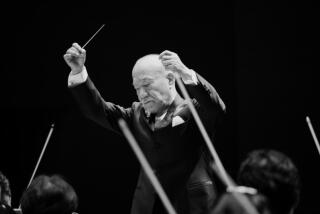A Course in Advanced Composition
“People think you get inspired and write a symphony,” says composer John Corigliano. “Not even with Beethoven is that true. He was very structurally oriented. He built his pieces and found material to fill them.”
Initially, Corigliano said, “Beethoven’s themes were really stupid. Then he spent a lot of time on them to make them intelligent. . . .
“Look at his sketches for the second movement of the ‘Emperor’ Concerto, for instance. The first time we see sketches of the theme, it’s in C major. But the second through the 30th sketches were in B major. Why would you do it in B major, which has five sharps and is totally unrelated to E-flat (the key of the concerto)? What was he doing changing the theme?
“The answer is, while he was composing the theme, he had already composed how the movement was going to end. He already knew he was going to link the (last) two movements. His mind was already working ahead: ‘That theme has to translate into a way I can get into E-flat.’
“If you (later) drop it a half-step (from B to B-flat), it becomes a dominant to (the tonic) E-flat” and cadences into the home key for the final movement.”
“That’s the thing you don’t notice about Beethoven that makes him so great,” Corigliano said.
“Nobody doubts he has punch and delivers those feelings music is made up of. But he does so much more because he thinks in that manner. He doesn’t sacrifice his emotional message by his architecture. . . .
“All these things people think are separate really overlap. The technical side of composing is tied up in the inspirational side. To me, they come together.”
More to Read
The biggest entertainment stories
Get our big stories about Hollywood, film, television, music, arts, culture and more right in your inbox as soon as they publish.
You may occasionally receive promotional content from the Los Angeles Times.










